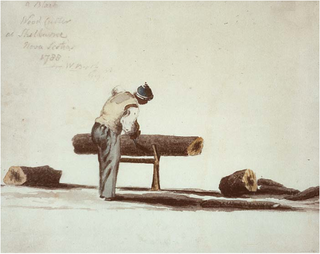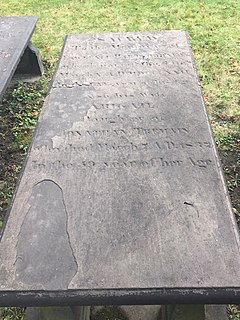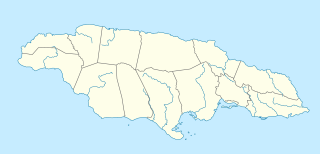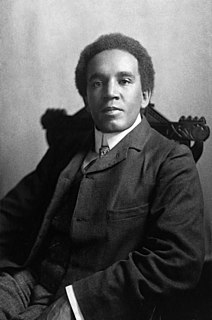
Accompong is a historical Maroon village located in the hills of St. Elizabeth Parish on the island of Jamaica. It is located in Cockpit Country, where Jamaican Maroons and indigenous Taíno established a fortified stronghold in the hilly terrain in the 17th century. They defended it and maintained independence from the Spanish and then later against British forces, after the colony changed hands.

Trelawny is a parish in the county of Cornwall in northwest Jamaica. Its capital is Falmouth. It is bordered by the parishes of Saint Ann in the east, Saint James in the west, and Saint Elizabeth and Manchester in the south. Trelawny is known for producing several Olympic sprinters.

Alexander Lindsay, 6th Earl of Balcarres and de jure 23rd Earl of Crawford was the son of James Lindsay, 5th Earl of Balcarres. He was a general in the British Army.

The Second Maroon War of 1795–1796 was an eight-month conflict between the Maroons of Cudjoe's Town, a Maroon settlement later re-named after Governor Edward Trelawny at the end of First Maroon War, located near Trelawny Parish, Jamaica in the St James Parish, and the British colonials who controlled the island. The Windward communities of Jamaican Maroons remained neutral during this rebellion and their treaty with the British still remains in force. Accompong Town, however, sided with the colonial militias, and fought against Trelawny Town.

St. John's Maroon Church is a Methodist church located in Maroon Town, a district of Freetown, the capital of Sierra Leone. It is one of the oldest churches in the country.

Black Nova Scotians or African Nova Scotians are Black Canadians whose ancestors primarily date back to the Colonial United States as enslaved people or freemen, and later arrived in Nova Scotia, Canada during the 18th and early 19th centuries. As of the 2016 Census of Canada, 21,915 Black people live in Nova Scotia, most in Halifax. Since the 1950s, numerous Black Nova Scotians have migrated to Toronto for its larger range of opportunities. Before the immigration reforms of the 1960s, Black Nova Scotians formed 37% of the total Black Canadian population.
Jamaican Maroons descend from maroons, Africans who escaped from slavery on the Colony of Jamaica and established communities of Free black people in Jamaica in the mountainous interior, primarily in the eastern parishes. Escaped Africans who were enslaved during Spanish rule over Jamaica (1493–1656) may have been the first to develop such refugee communities.
Major John Jarrett was a Jamaican Maroon leader of the Maroons of Cudjoe's Town in Jamaica. He was most likely named after a neighbouring planter with a similar surname.
Maroon Town, Sierra Leone, is a district in the settlement of Freetown, a colony founded in West Africa by Great Britain.

Cline Town is an area in Freetown, Sierra Leone. The area is named for Emmanuel Kline, a Hausa Liberated African who bought substantial property in the area. The neighborhood is in the vicinity of Granville Town, a settlement established in 1787 and re-established in 1789 prior to the founding of the Freetown settlement on 11 March 1792.
The Jamaican Maroons in Sierra Leone were a group of just under 600 Jamaican Maroons from Cudjoe's Town, the largest of the five maroon towns in Jamaica, who were deported by British forces following the Second Maroon War in 1796, first to Nova Scotia. Four years later in 1800, they were transported to Sierra Leone.

The Nova Scotian Settlers, or Sierra Leone Settlers were African-Americans who founded the settlement of Freetown, Sierra Leone and the Colony of Sierra Leone, on March 11, 1792. The majority of these black American immigrants were among 3000 African-Americans, mostly former slaves, who had sought freedom and refuge with the British during the American Revolutionary War, leaving rebel masters. They became known as the Black Loyalists. The Nova Scotian settlers were jointly led by African-American Thomas Peters, a former soldier, and English abolitionist John Clarkson. For most of the 19th century, the Settlers resided in Settler Town and remained a distinct ethnic group within the Freetown territory, tending to marry among themselves and with Europeans in the colony. Indigenous tribes in the region included the Sherbro and Mende.

Maroon Town is a settlement in Jamaica. It has a population of 3122 as of 2009.
Major-General The Honourable George Walpole, was a British soldier and politician. He gained distinction after suppressing the Maroon insurrection in Jamaica in 1795. After entering Parliament in 1797, he served as Under-Secretary of State for Foreign Affairs from 1806 to 1807 in the Ministry of All the Talents headed by Lord Grenville.
Robert Charles Dallas was a Jamaican-born British poet and conservative writer. He is known also for a contentious book on Lord Byron, and a history of the Second Maroon War.

The Sierra Leone Creole people is an ethnic group in Sierra Leone. The Sierra Leone Creole people are descendants of freed African American, West Indian, and Liberated African slaves who settled in the Western Area of Sierra Leone between 1787 and about 1885. The colony was established by the British, supported by abolitionists, under the Sierra Leone Company as a place for freedmen. The settlers called their new settlement Freetown. Today, the Sierra Leone Creoles are 1.3% of the population of Sierra Leone.

Cudjoe's Town was located in the mountains in the southern extremities of the parish of St James, close to the border of Westmoreland, Jamaica.
Montague James was a Maroon leader of Cudjoe's Town in the last decade of eighteenth-century Jamaica.
Andrew Smith was a Maroon officer from Cudjoe's Town. His brother, Charles Samuels, was also an officer from Trelawny Town, and both officers reported to Colonel Montague James.
Free black people in Jamaica fell into two categories. Some secured their freedom officially, and lived within the slave communities of the Colony of Jamaica. Others ran away from slavery, and formed independent communities in the forested mountains of the interior. This latter group included the Jamaican Maroons, and subsequent fugitives from the sugar and coffee plantations of coastal Jamaica.











